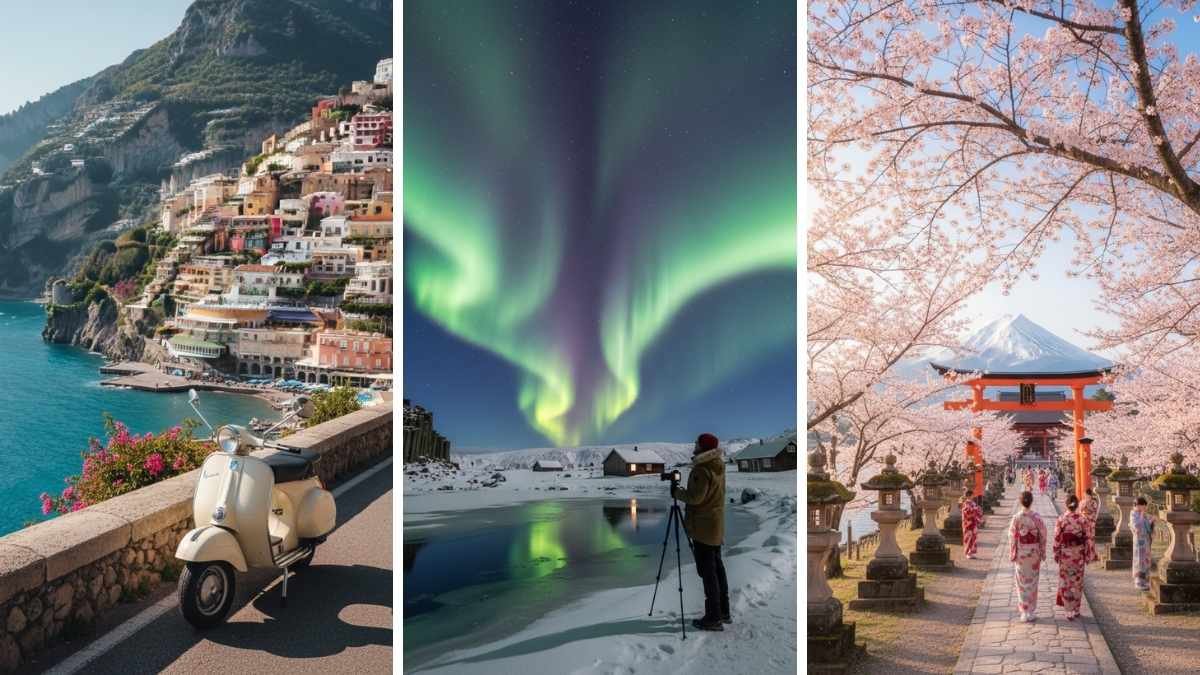
There’s a sweet spot in your 30s — old enough to travel with purpose, young enough to chase the kind of adventures that still quicken your pulse. It’s the decade where you crave stories that stretch beyond a vacation, the kind that stay lodged in your memory long after your passport is tucked away.
This is your moment to collect miles that mean something — mountain sunrises, long roads, spontaneous detours, and friendships born somewhere far from Wi-Fi. These trips aren’t about escape; they’re about expansion — journeys that remind you who you are when the world feels wide open again.
1. Road Trip Through New Zealand’s South Island
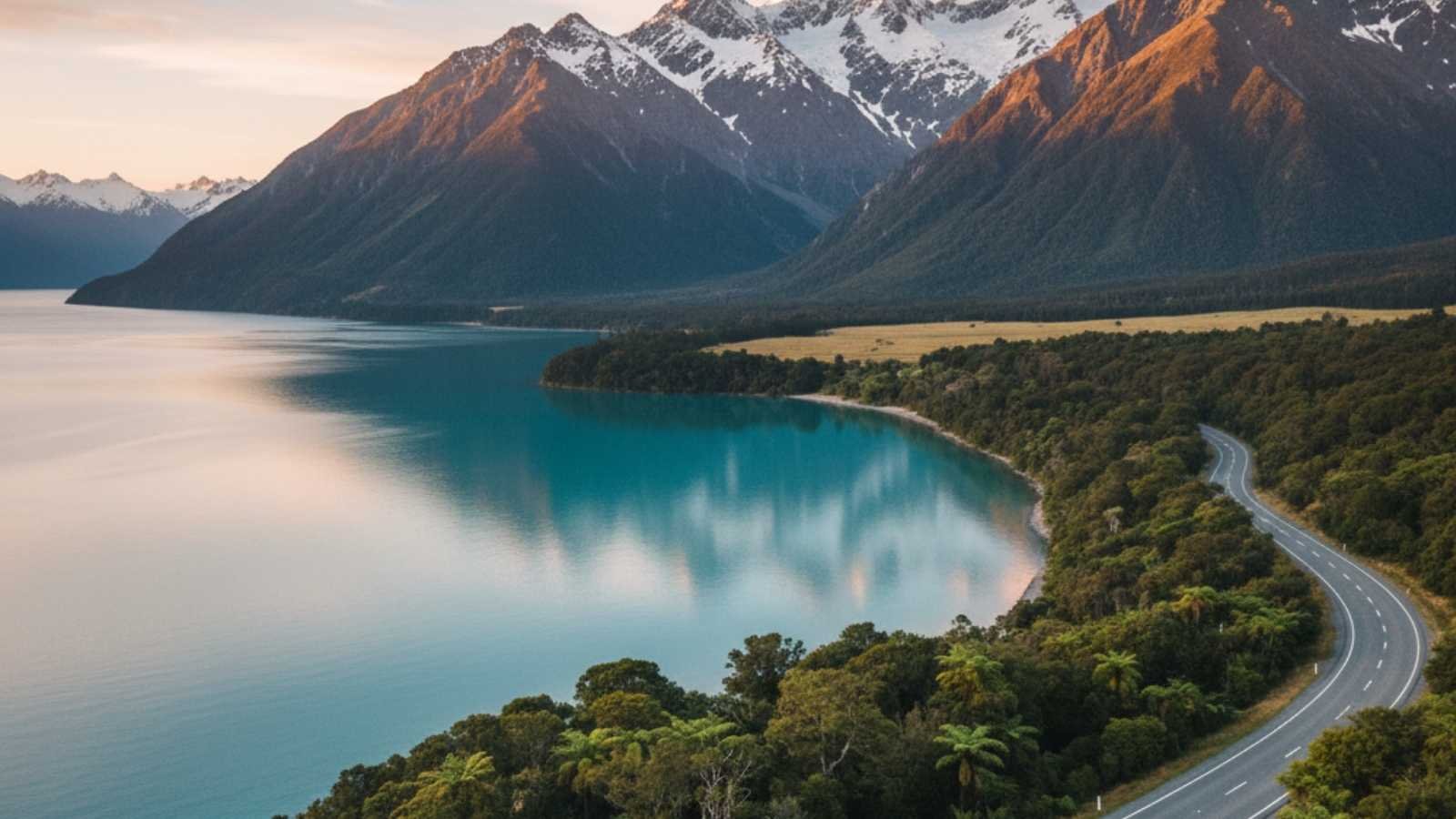
The South Island is one of those places where the journey is the destination — long coastlines, fjords, glaciers, alpine lakes, and tiny towns strung along perfectly drivable roads. Driving here gives you a pace that feels luxurious: stop for a 10-minute hike, spend an afternoon at a wild beach, or pull over for a sunset that changes colors as you sip something warm. For memory-making, it’s unbeatable because every day mixes easy adventure (short hikes, scenic drives) with moments of genuine quiet.
Activities are wonderfully varied: kayak through Milford Sound at dawn, hike a section of the Routeburn Track, wine-taste in the Marlborough region, or take a helicopter up to a glacier. Logistics are friendly for travelers — English is universal, roads are well-maintained, and there’s a strong network of campervan parks and small B&Bs. That flexibility turns a vacation into a personal odyssey: design your route around who you want to be that week — relaxed, curious, active, or a bit of all three.
For memories and miles, this trip rewards curiosity. The landscape changes fast enough that every two-hour drive feels fresh, yet slow enough that you can actually process it. One traveler noted how a spontaneous detour to a valley she’d never heard of became her favorite sunrise — a reminder that giving yourself small windows for unplanned stops often yields the richest moments.
- Best months to visit: October–April (late spring to early autumn)
- Recommended duration: 10–18 days (two weeks ideal)
- Approx. budget: Mid-range to splurge (varies by accommodation and helicopter/coach tours)
- Must-pack: Layers, sturdy walking shoes, rain jacket, sunscreen, insect repellent
- Difficulty: Easy–Moderate (self-drive + optional hikes)
- Travel tip: Rent a vehicle with adequate fuel range and pick up a local SIM for offline maps and last-minute detours.
2. Safari Adventure in Kenya’s Maasai Mara
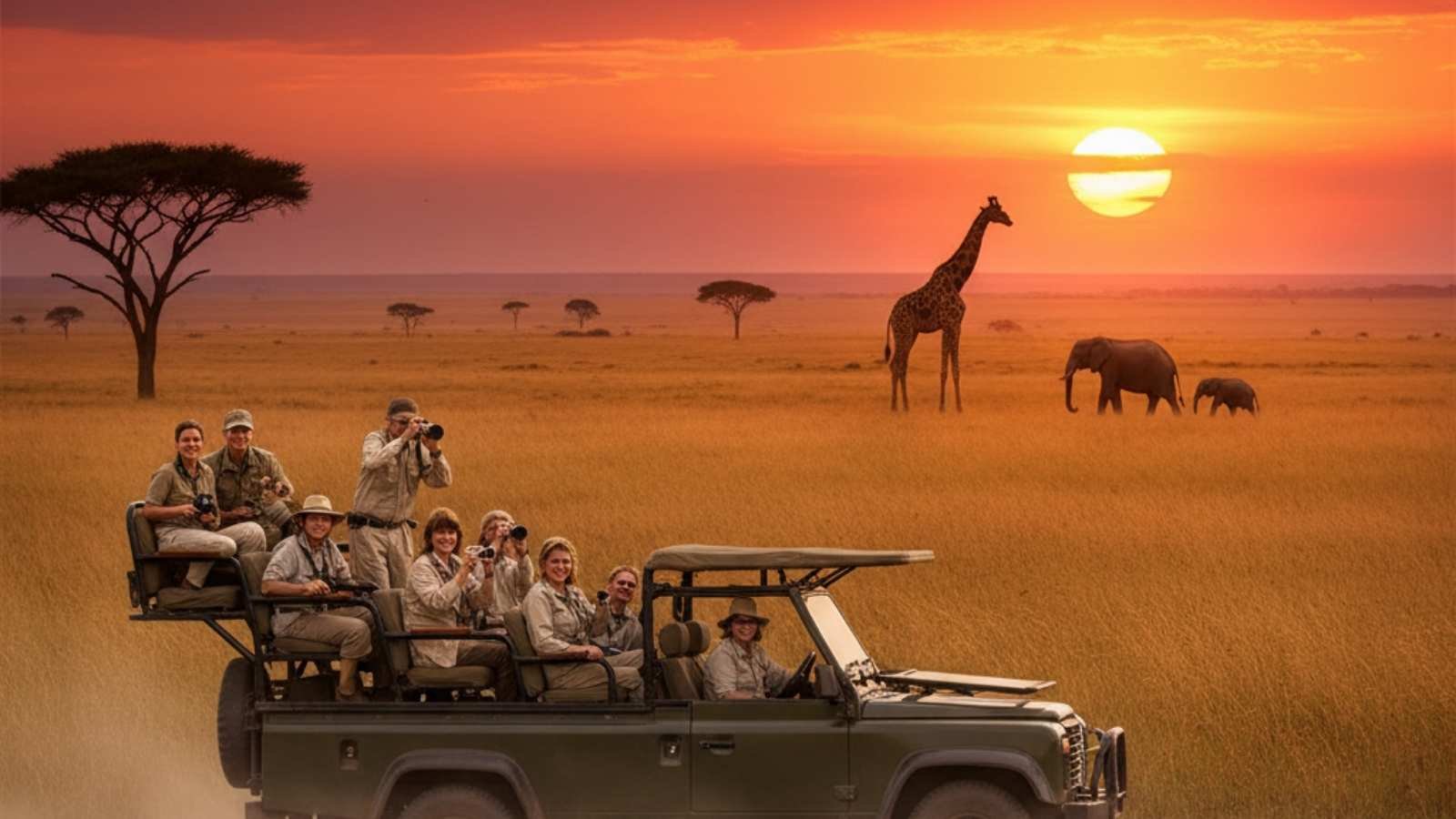
A classic safari in the Maasai Mara gives a type of travel memory that’s visceral: morning dust, the coordinated hush of guides, and the sudden eruption of movement when a pride of lions rises. The Mara’s mixture of open plains and riverine woodland makes it one of the most productive wildlife landscapes on earth. It’s not just about seeing animals — it’s about being present in those tense, beautiful moments when predator and prey cross paths.
Beyond game drives, cultural encounters add depth: visits with Maasai communities can provide perspective on local life, traditional knowledge, and conservation efforts. Many lodges and camps are deeply involved in community projects, so your stay often supports local livelihoods. Lodge choices range from intimate tented camps that feel woven into the landscape to luxury properties with full-service amenities — there’s an authenticity to staying in a tent that still feels safe and comfortable.
For photographic memories or sheer awe, plan at least a few full days here. The Mara also ties nicely to other Kenya highlights (Amboseli, Lake Nakuru) or neighbouring Tanzania if you’re chasing the Great Migration across borders. A traveler’s memory often centers on the quiet after a sunset drive — the sky immense, and the sounds of the savannah settling — a simple scene that lingers long after the trip ends.
- Best months to visit: July–October (peak Great Migration viewing), January–March (good calving season)
- Recommended duration: 4–7 days in the Mara (7–10 days if combining regions)
- Approx. budget: Mid to high (safari logistics and park fees add cost)
- Must-pack: Lightweight neutral clothing, binoculars, sunhat, malaria prophylaxis (consult doctor), camera with zoom lens
- Difficulty: Easy (game drives)
- Travel tip: Book guided drives through reputable operators; early morning and late afternoon drives are when wildlife activity peaks.
3. Trek to Machu Picchu, Peru
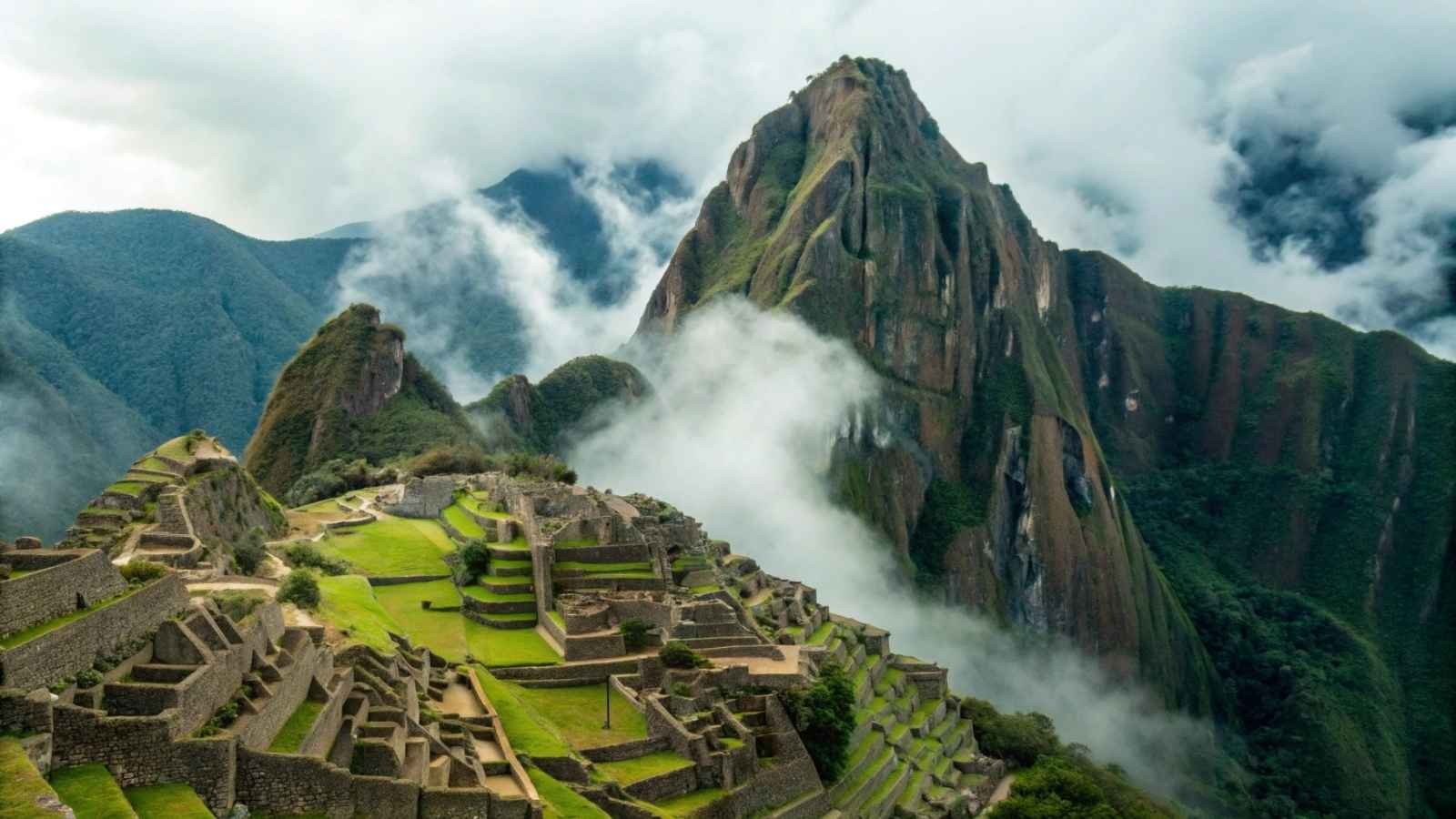
A Machu Picchu trek combines physical effort with history in a way that rewards both body and imagination. Whether you choose the classic Inca Trail or one of the alternative routes (Salkantay, Lares, Inca Jungle), the trail sections pass through cloud forest, high Andean passes, and ancient ruins — a layered experience of geography and human craftsmanship. Reaching the Sun Gate or the terraced citadel after several days of walking gives a real sense of earned arrival.
Altitude and planning are the pair of practicalities here: acclimatize in Cusco or the Sacred Valley first, and give yourself at least a few days to adjust. Permits for the classic Inca Trail are limited and sell out, so booking ahead is essential. The trek’s communal rhythm — early mornings, shared camp dinners, guide stories — often becomes a highlight: the people on the trail transform a hike into a shared chapter of the trip.
The emotional payoff is huge because Machu Picchu marries mystery, scale, and sensory detail: mist lifting off terraces, the smell of wet earth, and the abrupt visual of carved stone against green. Travelers commonly report that the moment they first see the ruins after days of effort feels iconic — not only for the site itself, but for the story of getting there.
- Best months to visit: May–September (dry season; June–August busiest)
- Recommended duration: 7–10 days (including acclimatization and travel)
- Approx. budget: Mid-range (trek operator, permits, train options)
- Must-pack: Warm layers, sun protection, trekking boots, water purification method, small daypack
- Difficulty: Moderate–Strenuous (depends on route)
- Travel tip: Book Inca Trail permits and a trusted guide well in advance; consider alternative treks if permits are unavailable.
4. Sailing the Greek Islands

Sailing the Greek Islands offers a travel rhythm that’s both relaxed and endlessly surprising: a short sail to a new harbor, a seaside taverna with fresh fish, and an afternoon in a whitewashed village where time slows. Whether aboard a private yacht, a flotilla charter, or island-hopping by ferry, the sea links micro-adventures — snorkeling in hidden coves, exploring Venetian fortresses, and lingering over mezze as the sun dips.
There’s a sensory richness to island-hopping: the wind, the tactile creak of ropes, local wines, and the bright citrus and oregano scent that seems to hang in the warm air. Choices range from the cosmopolitan buzz of Mykonos to the low-key charm of Naxos or the dramatic cliffs of Santorini. For people in their 30s, it’s a great blend of social time (shared meals, dockside bars) and solo pockets (quiet beaches, early-morning swims).
Sailing is also accessible across budgets: shared charters and local ferries reduce cost, while private yachts provide a splurge option. The memory-making comes from the sequence of small, perfect days — wake, sail, explore, eat — that, when stacked, build a vacation you’ll replay for years.
- Best months to visit: May–June and September–October (warmer seas, fewer crowds)
- Recommended duration: 7–10 days (one week minimum to enjoy several islands)
- Approx. Budget: Budget too high (depends on charter type)
- Must-pack: Light breezy clothing, reef-safe sunscreen, water shoes, quick-dry towel
- Difficulty: Easy (but basic sailing knowledge helps if chartering bareboat)
- Travel tip: If you want calm seas and fewer crowds, target shoulder seasons; consider island clusters (Cyclades, Dodecanese) to minimize long sails.
5. Japan’s Cherry Blossom Season Tour
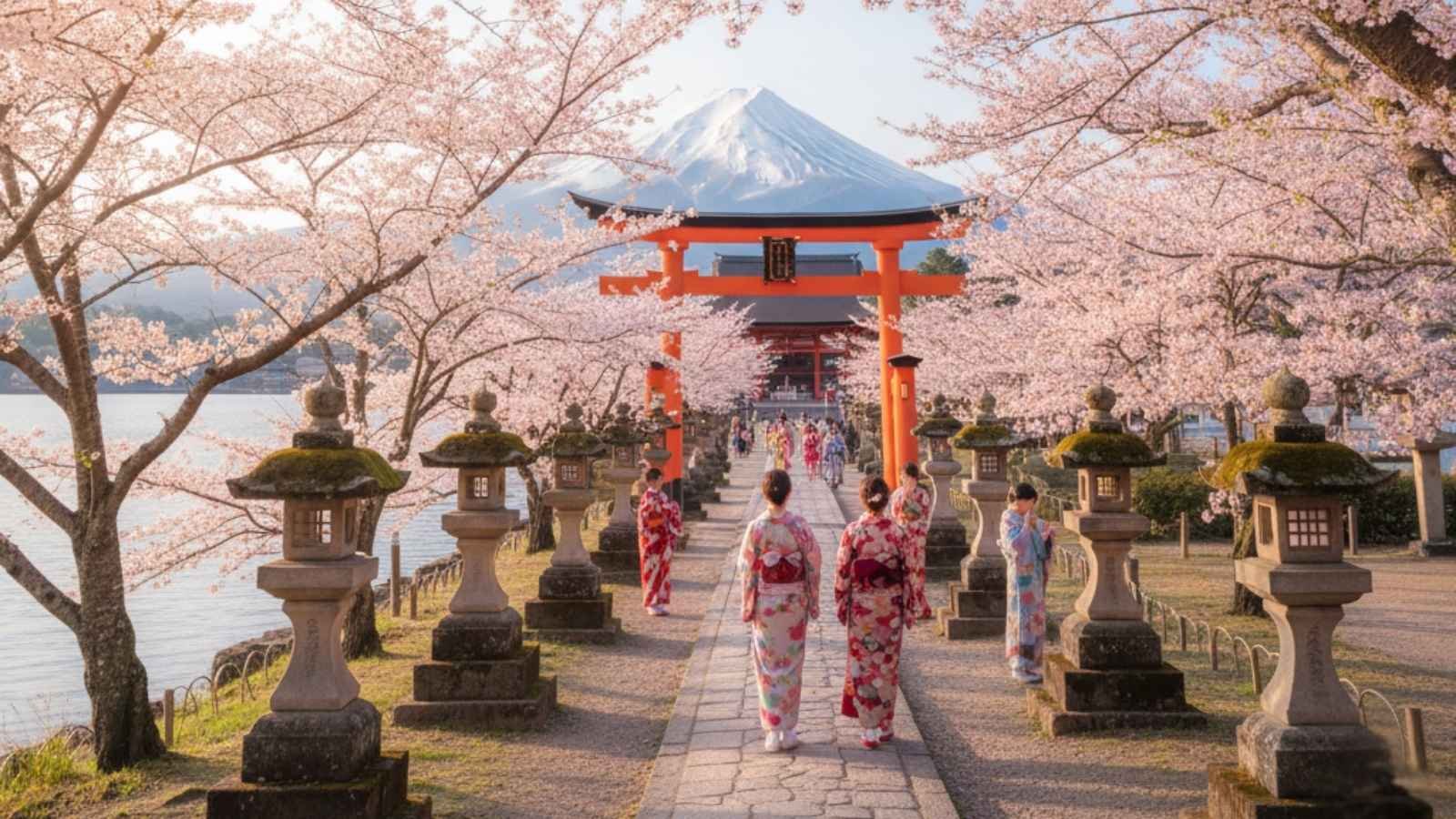
Cherry blossom season (sakura) is not just a visual festival — it’s a cultural rhythm that affects food, parks, and daily routines. Cities like Tokyo and Kyoto transform as parks and riverbanks fill with picnickers, lanterns, and ephemeral petals. The timing shifts north to south across weeks, so a well-planned route can let you chase peak bloom down Japan’s archipelago.
Beyond petals, Japan layers history, modernity, and culinary brilliance: one day you’re in a temple garden in Kyoto, the next you’re navigating neon streets or soaking in an onsen. For a 30s traveler, the mix of urban convenience and curated cultural encounters (teahouse ceremonies, izakaya nights, early-morning temple visits) makes it both restful and exhilarating. The sakura season also encourages slow experiences: sit under a tree with bento, join a hanami gathering, or take a quiet walk at sunrise while the city hasn’t fully woken.
Planning is the key — book accommodations early, and use the excellent train network to string together city and countryside. Many travelers find that the emotional memory of sakura isn’t a single photo but a series of small moments: a cup of matcha under pink branches, the scent of new spring, the way strangers quietly celebrate together.
- Best months to visit: Late March–early April (varies by location; earlier in the south, later in the north)
- Recommended duration: 7–14 days (to see multiple regions)
- Approx. budget: Mid-range to high (peak season; rail passes help save)
- Must-pack: Comfortable walking shoes, light waterproof layer, portable phone charger, cash for small vendors
- Difficulty: Easy (urban travel, lots of walking)
- Travel tip: Use the Japan Rail Pass for intercity travel and book accommodation early during the sakura season to avoid sold-out rooms.
6. Hiking Patagonia in Chile and Argentina
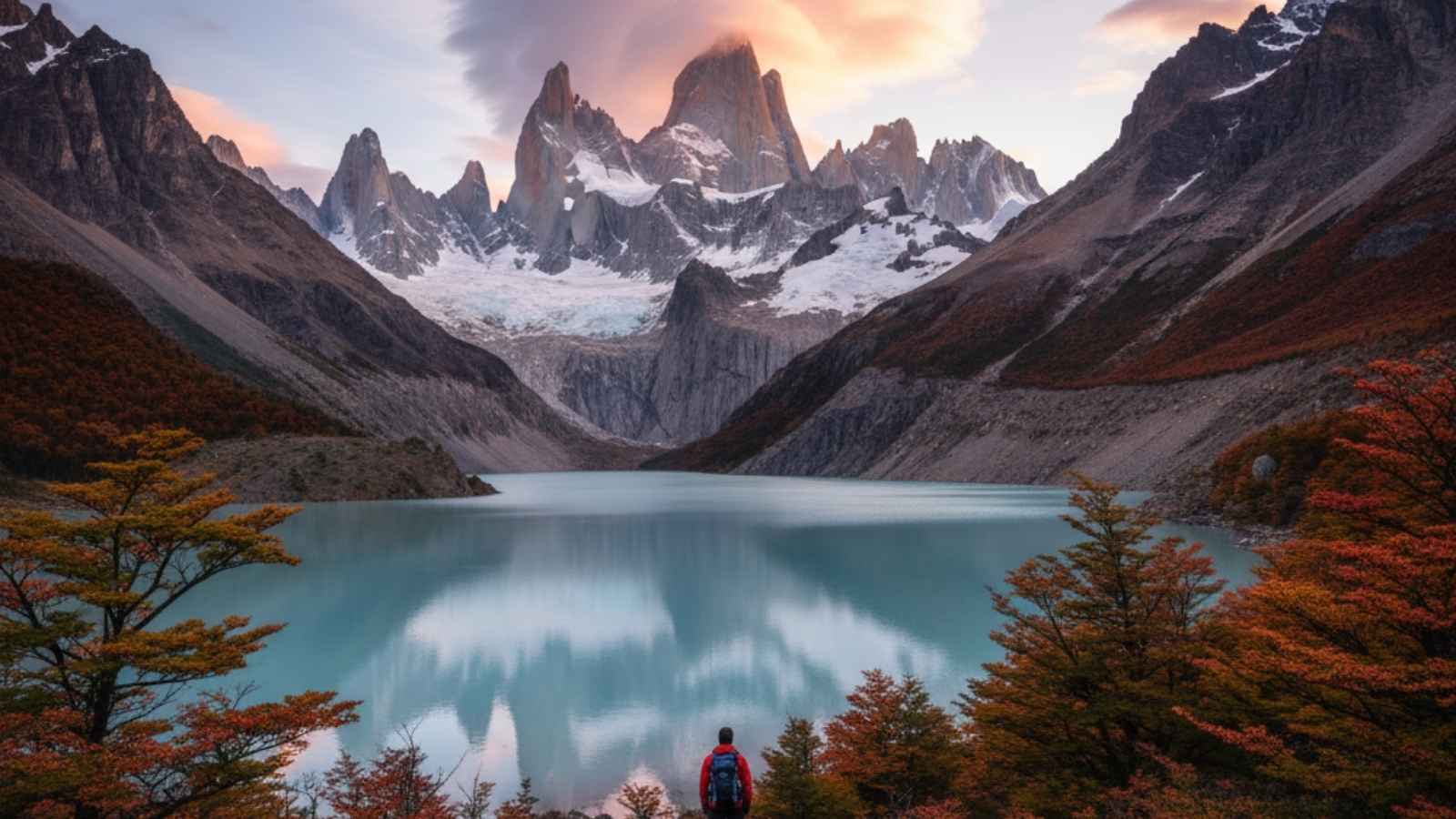
Patagonia feels like the edge of the world — vast, untamed, and utterly cinematic. Between Chile’s Torres del Paine and Argentina’s Los Glaciares National Park, you’ll find some of the planet’s most striking wilderness: jagged granite towers, turquoise glacial lakes, and skies that seem to change mood every hour. For travelers in their 30s, it’s the perfect blend of challenge and catharsis — the kind of landscape that humbles and energizes you at once.
Days are filled with long but rewarding hikes: the W Trek and Fitz Roy Trail are the two big draws, each delivering panoramic payoffs that feel almost surreal. Evenings bring simple pleasures — warm food, laughter with fellow trekkers, and the cozy weight of fatigue that only true adventure gives. The region’s remoteness also makes you aware of your own presence — disconnected from noise, plugged into the rhythm of nature.
Patagonia is as much about mindset as mileage. Weather shifts fast, and plans bend around it, so flexibility is part of the adventure. One traveler recalled getting soaked halfway through a hike, only to watch the clouds part five minutes later to reveal a rainbow over Torres del Paine — a perfect metaphor for travel in your 30s: sometimes the detours are what you’ll remember most.
- Best months to visit: November–March (Patagonian summer)
- Recommended duration: 10–14 days
- Approx. budget: Mid to high (park fees, transfers, guided treks)
- Must-pack: Waterproof gear, warm layers, hiking poles, refillable bottle
- Difficulty: Moderate–Strenuous
- Travel tip: Weather changes quickly — always carry windproof and waterproof layers, even on clear mornings.
7. Exploring Italy’s Amalfi Coast by Vespa
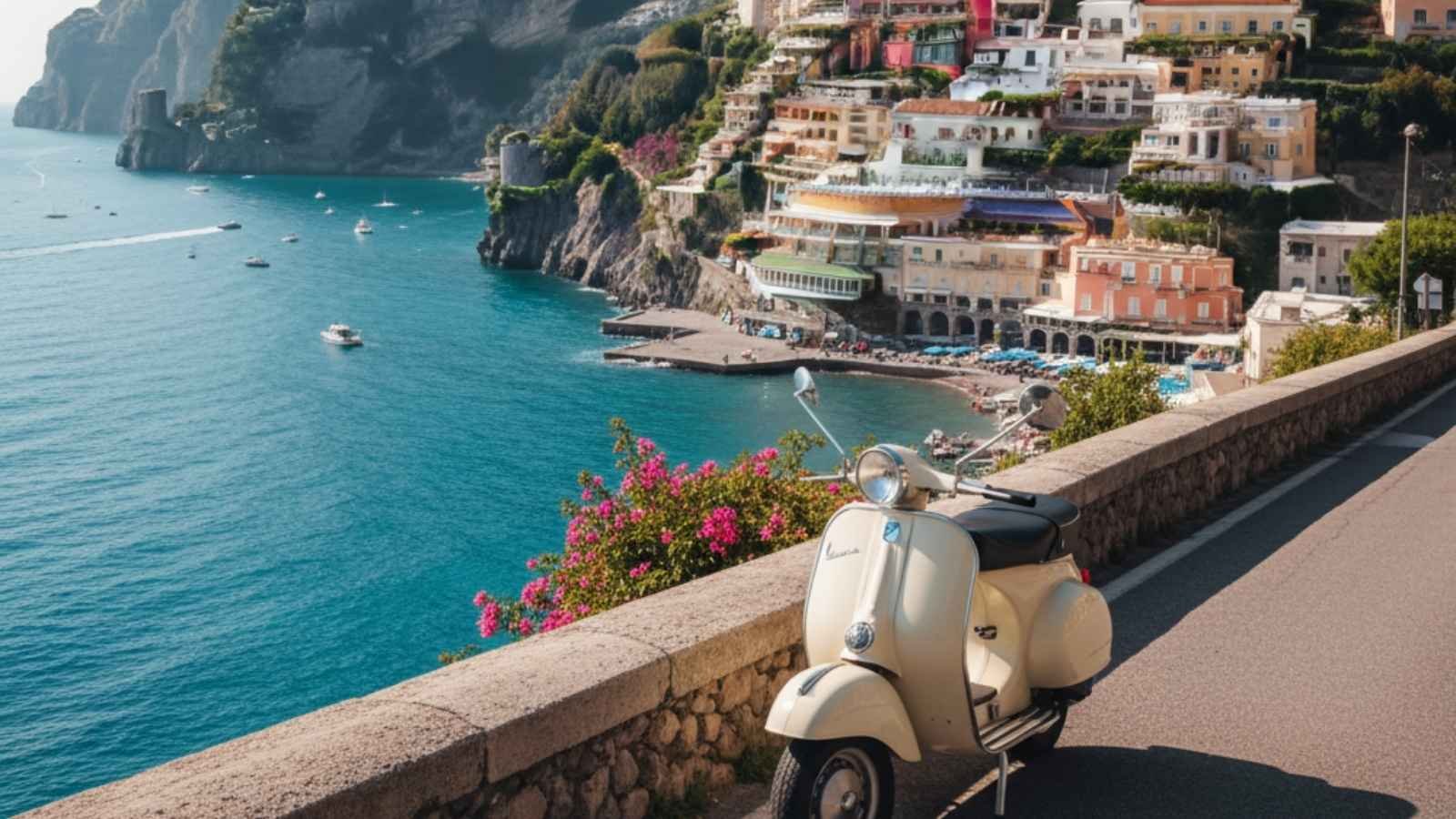
There’s a special joy to cruising the Amalfi Coast on two wheels — lemons in the air, sea flashing below, and every curve revealing another pastel town. Driving a Vespa here turns travel into something tactile: the hum of the motor, the salt in the breeze, the spontaneous stops for gelato or espresso. It’s a sensory overload in the best possible way.
Each village offers a new mood. Positano’s vertical charm, Ravello’s quiet gardens, and Amalfi’s historic energy all feel connected yet distinct. Riding between them means you get to skip the tourist gridlock of buses and experience a freedom that most visitors miss. Locals often wave or chat at fuel stops — a small but human part of the experience that stays with you. The roads are narrow but manageable for confident riders, and rental companies provide excellent route suggestions.
The Amalfi Coast rewards a slow traveler’s spirit. Instead of rushing from point to point, it’s about letting time stretch — staying longer in a town that feels right, or taking that extra detour to a roadside trattoria that ends up serving your favorite meal of the trip. It’s the kind of trip that balances beauty with presence.
- Best months to visit: May–June and September–October
- Recommended duration: 5–7 days
- Approx. budget: Mid-range (Vespa rental + lodging + meals)
- Must-pack: Helmet (provided by rental), sunglasses, light scarf, small backpack
- Difficulty: Easy–Moderate (basic riding confidence needed)
- Travel tip: Start rides early in the morning to avoid midday traffic and enjoy golden-hour views.
8. Diving the Great Barrier Reef, Australia
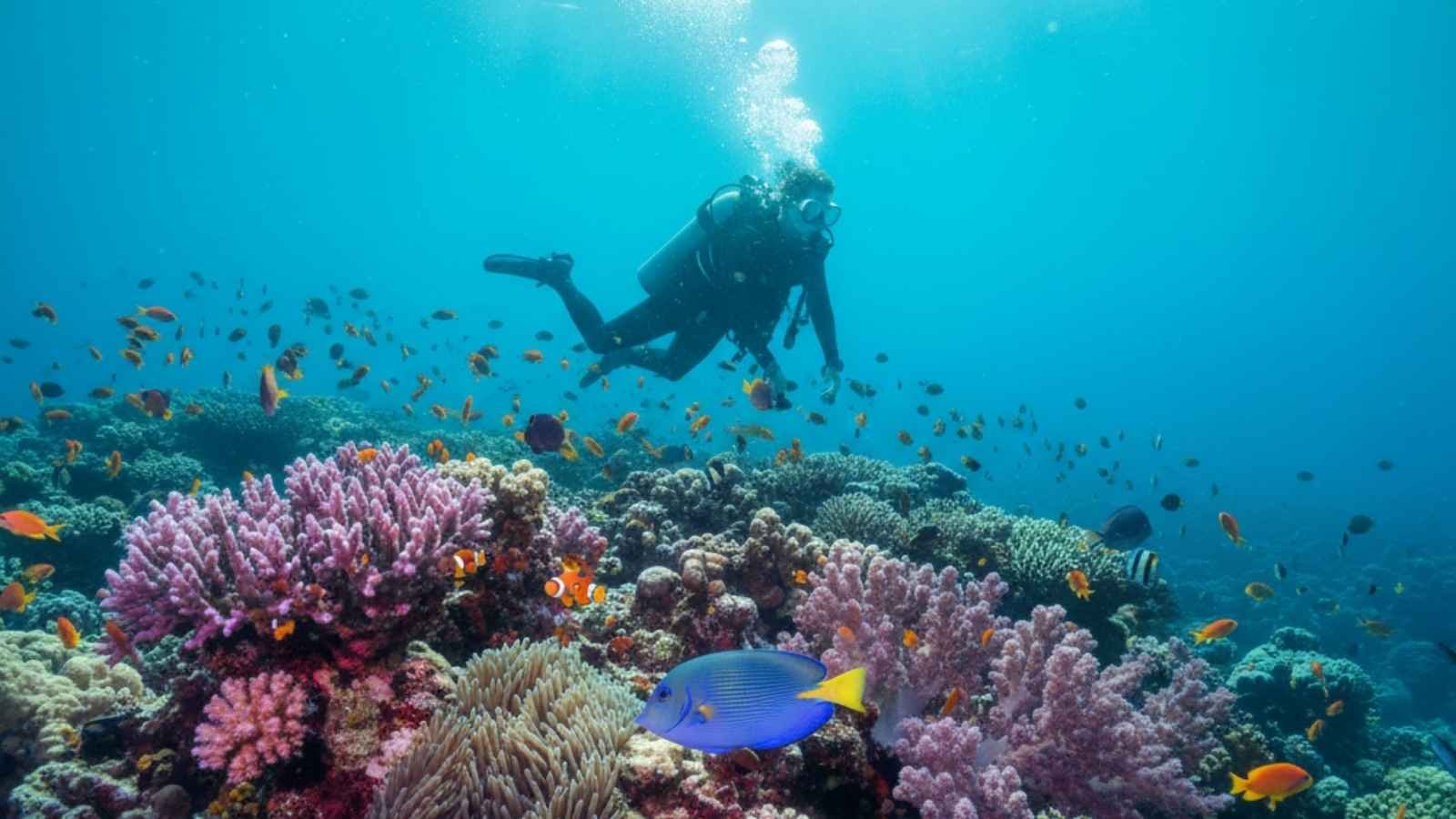
The Great Barrier Reef is more than a dive — it’s an entry into another world. Beneath the surface, coral gardens ripple with color, and the sheer diversity of marine life makes every dive feel like an unfolding secret. For those in their 30s, it’s a bucket list experience that pairs thrill with ecological awe — a chance to witness one of Earth’s greatest living systems while it still thrives.
You can experience it from various angles: liveaboard dive boats for full immersion, day trips from Cairns or Port Douglas, or even snorkeling options if diving isn’t your comfort zone. Between dives, the days melt into easy rhythms — sun on deck, salt in hair, shared stories over dinner. It’s active yet restorative in a way that beach vacations rarely achieve. And if you time it right, you might even witness the reef’s coral spawning — nature’s own fireworks show underwater.
There’s also meaning behind the beauty. Many local operators lead eco-certified tours, teaching travelers how to help preserve the reef’s delicate balance. You come home with a tan, sure — but also a deeper respect for marine life and the reminder that seeing something so alive is a privilege, not a guarantee.
- Best months to visit: June–October (dry season, best visibility)
- Recommended duration: 5–10 days
- Approx. budget: Mid to high (gear, dive tours, reef taxes)
- Must-pack: Reef-safe sunscreen, swimwear, GoPro or underwater camera
- Difficulty: Easy–Moderate (snorkeling to scuba levels)
- Travel tip: Choose reef-safe sunscreen and certified eco-operators to protect the coral.
9. Northern Lights Chase in Norway or Iceland
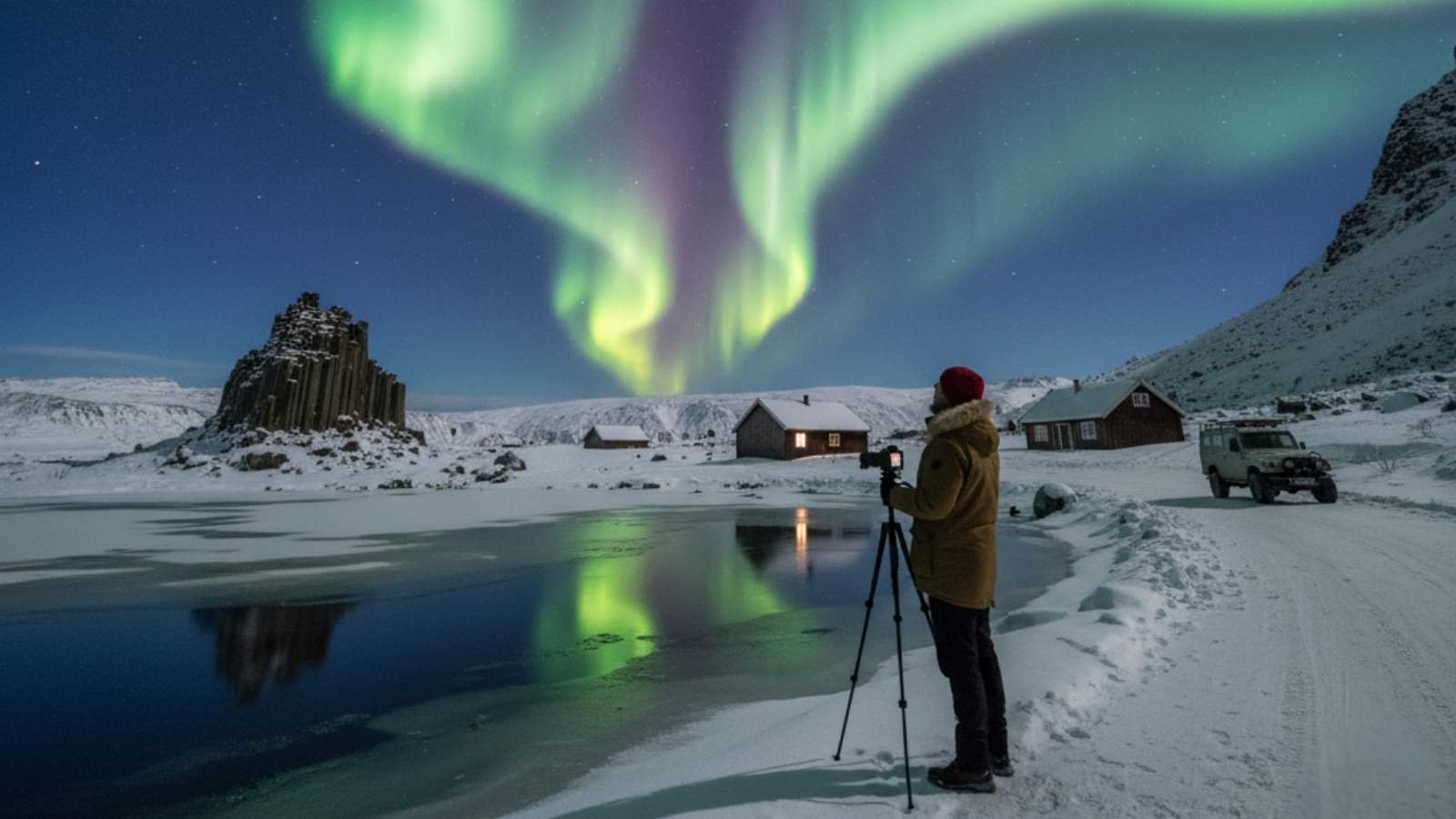
Seeing the Northern Lights isn’t just visual — it’s emotional. There’s something about the stillness of a frozen night, the crackle of cold air, and then that green shimmer unfurling across the sky that makes time stand still. In your 30s, it’s the kind of trip that shifts from a bucket list dream into a story you’ll tell for decades.
Norway and Iceland are two of the best stages for this spectacle. Both offer wild winter landscapes that add drama — frozen fjords, black-sand beaches, steaming geothermal pools. Chasing the aurora is part science, part patience: cloudless skies, solar activity, and just the right timing. Some travelers rent cars and follow the forecasts; others join guided small-group tours that blend adventure (snowmobiling, hot springs) with late-night sky watching.
What makes this trip special isn’t just the light itself — it’s the anticipation. The hours you spend waiting under a vast sky create a strange intimacy with the world. And when the aurora finally dances overhead, it doesn’t feel like a performance — it feels like the Earth itself is showing off, just for a moment.
- Best months to visit: September–April (peak viewing December–March)
- Recommended duration: 5–8 days
- Approx. budget: Mid to high (winter gear, tours, lodgings)
- Must-pack: Thermal layers, tripod, hand warmers, waterproof boots
- Difficulty: Easy (cold endurance needed)
- Travel tip: Stay at least 4–5 nights — clear skies can’t be guaranteed every day.
10. Food and Culture Journey Through Vietnam

Few places combine flavor, energy, and authenticity the way Vietnam does. From the French-influenced boulevards of Hanoi to the lantern-lit alleys of Hoi An and the street markets of Ho Chi Minh City, each stop feels like a new sensory chapter. Food isn’t just part of the trip here — it’s the structure around which everything flows.
Every meal feels alive: steaming bowls of pho at sunrise, crispy banh mi on a street corner, or a family-run café serving recipes perfected over generations. Add in cooking classes, countryside bike rides, and the Mekong’s floating markets, and you’ve got a trip that engages every sense. The joy lies in the mix of chaotic urban life and peaceful rural simplicity — one moment dodging scooters, the next drifting down a quiet canal.
Vietnam’s warmth comes from its people as much as its cuisine. Locals often share stories between servings, making meals feel like conversations. It’s the kind of trip that makes you rethink how food connects to culture — and why travel in your 30s feels best when it feeds both body and curiosity.
- Best months to visit: February–April and August–October (pleasant weather north to south)
- Recommended duration: 10–14 days
- Approx. budget: Affordable to mid-range
- Must-pack: Lightweight clothing, reusable chopsticks, mosquito repellent
- Difficulty: Easy (urban exploration, short hikes)
- Travel tip: Take a local food tour early in each city — it sets the tone and teaches you what to look for the rest of the trip.
11. Campervan Loop Around Iceland’s Ring Road
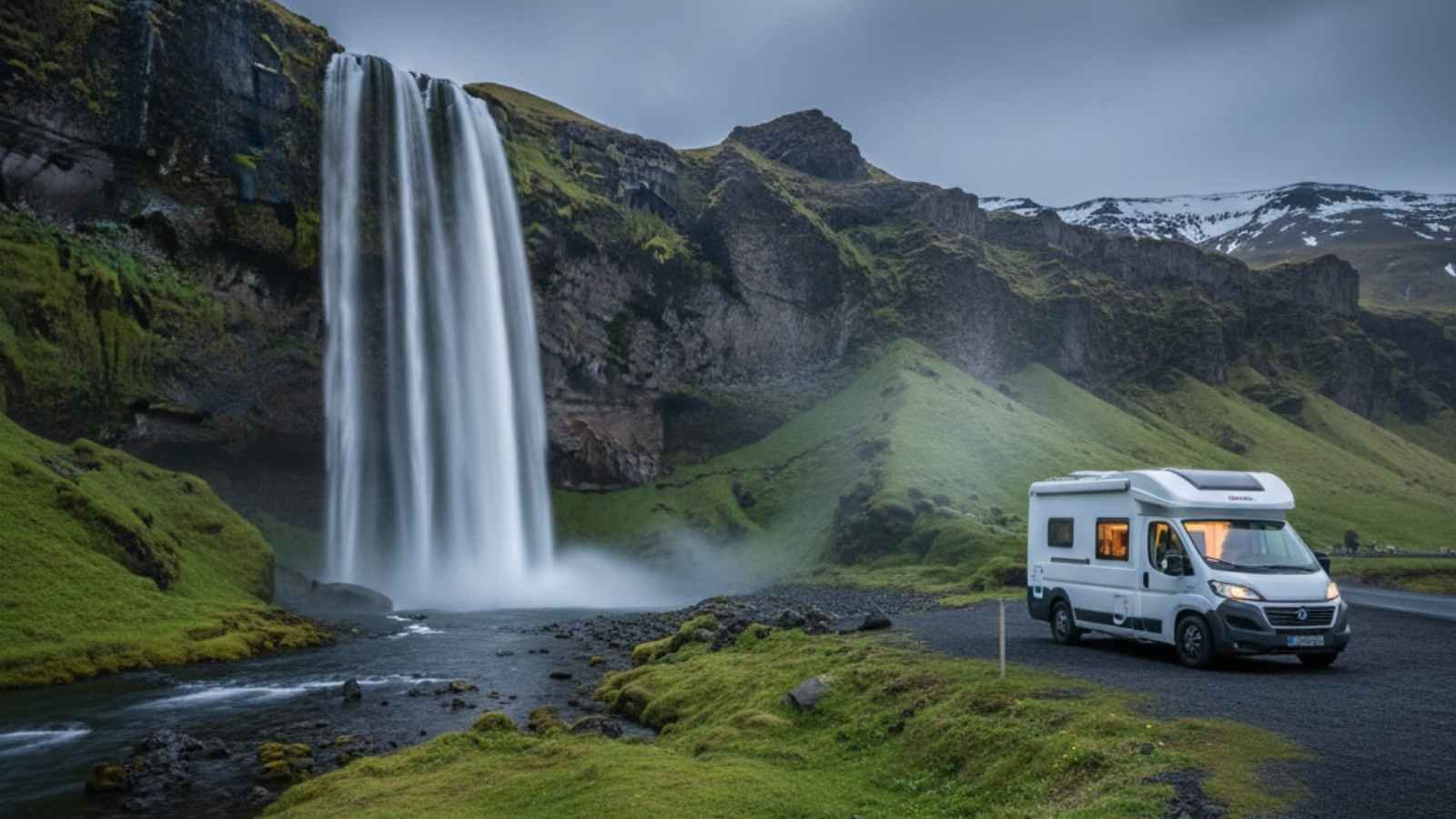
Few trips deliver freedom like Iceland’s Ring Road — a single looping highway that feels like a living postcard. Every hour brings a change in landscape: glaciers, volcanoes, waterfalls that thunder beside the road, and black-sand beaches where the Atlantic roars. Driving a campervan here is less about camping and more about mobility — your bed, kitchen, and front-row seat to the elements all in one.
There’s a rhythm to life on the Ring Road. You wake to misty mornings, brew coffee beside steaming geothermal fields, and drive through scenery so cinematic it almost feels staged. Then, just as you think you’ve seen the highlight, another waterfall appears or a herd of Icelandic horses ambles into view. It’s unpredictable in the best way — nature decides the day’s mood. Locals call it “weather theatre,” and they’re right; sunshine, snow, and rainbows often share the same hour.
This kind of journey rewards curiosity over planning. Skip the rush. Stop at lesser-known places like Borgarfjörður or Seyðisfjörður, where you’ll find fjord towns painted in pastels and hot springs that don’t make Instagram reels. One traveler summed it up perfectly: you don’t drive the Ring Road to arrive anywhere — you drive it to feel alive everywhere.
- Best months to visit: June–September (24-hour daylight, best road conditions)
- Recommended duration: 7–12 days
- Approx. budget: Mid to high (camper rental, fuel, park fees)
- Must-pack: Warm layers, waterproof outerwear, swimwear for hot springs, reusable grocery bags
- Difficulty: Easy–Moderate (self-drive; some gravel roads)
- Travel tip: Download offline maps and book key campsites early during peak season. Iceland’s wind can be fierce — always park facing it at night.
12. Music and Art Pilgrimage Across the American South
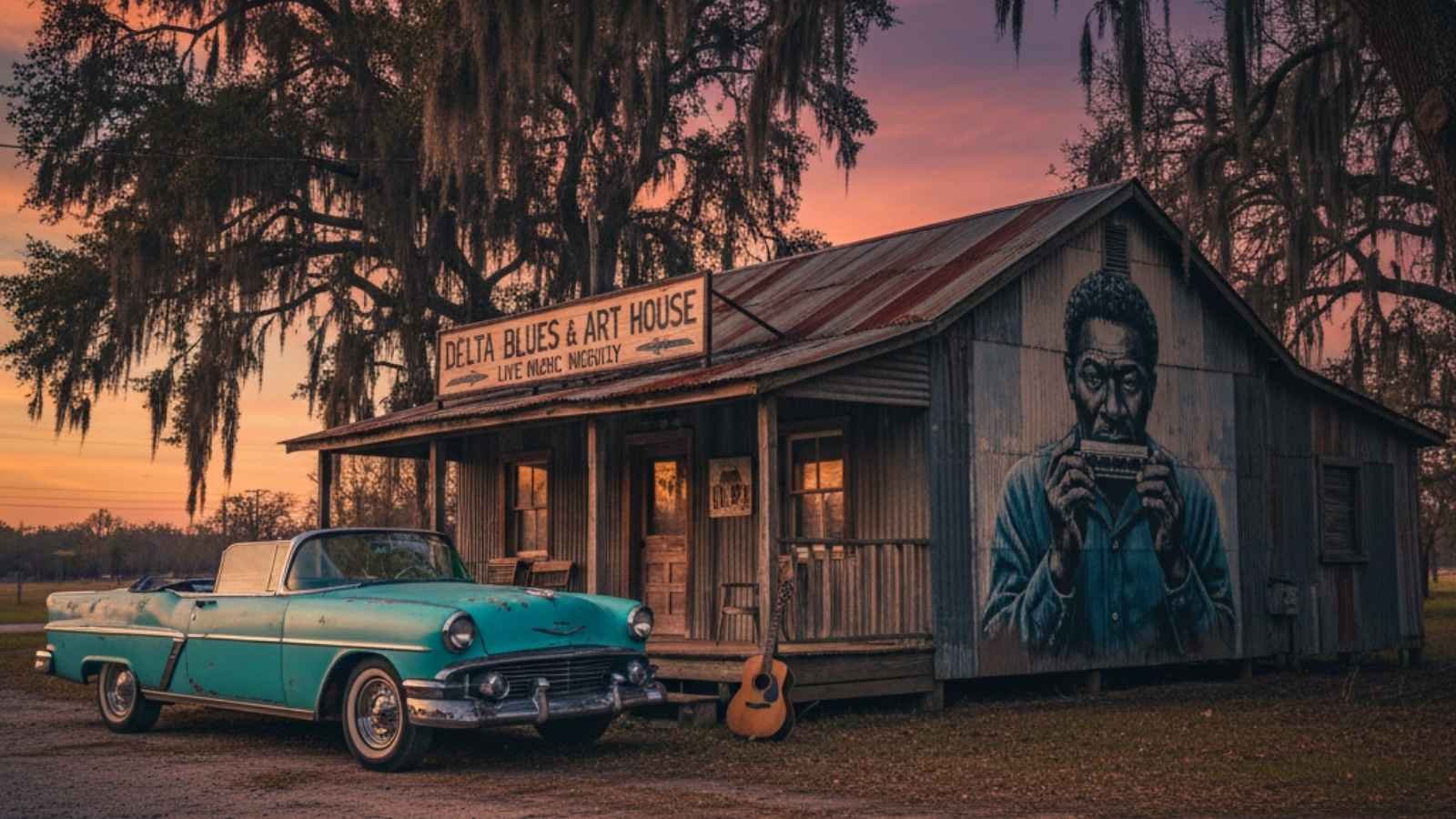
This trip isn’t about chasing a single sight — it’s about chasing sound and soul. The American South hums with creativity; it’s where music was born, and reinvented a hundred times over. A route that winds from Nashville to Memphis to New Orleans takes you through the birthplace of blues, country, and jazz — genres that shaped the world long before playlists existed.
Each stop tells a different story. In Nashville, guitars strum through every bar, and small venues often host tomorrow’s legends. Memphis still vibrates with echoes of Elvis and the civil rights movement — a city of rhythm and resilience. By the time you reach New Orleans, music spills into the streets; brass bands parade through neighborhoods where food, faith, and art blur together in pure joy. It’s one of those rare routes where every night feels like a different heartbeat.
The beauty of this journey is how it bridges culture, history, and human connection. You don’t just listen to the South — you live it, in smoky bars, record shops, and sidewalk jam sessions where strangers become an audience. It’s the kind of trip that reminds you that travel isn’t always about distance — sometimes it’s about resonance.
- Best months to visit: March–May and September–November (pleasant weather and festivals)
- Recommended duration: 7–10 days
- Approx. budget: Moderate (music events, accommodations, food)
- Must-pack: Comfortable clothes for warm weather, a light jacket, open ears, and curiosity
- Difficulty: Easy (urban exploration and drives)
- Travel tip: Time your visit to catch Jazz Fest in New Orleans or a live show at the Grand Ole Opry — they’re cultural touchstones, not just concerts.






